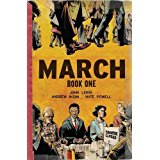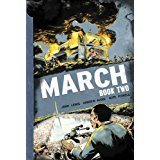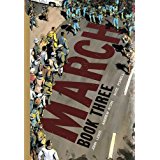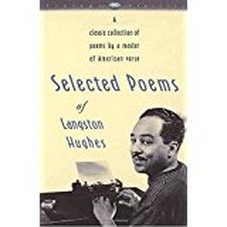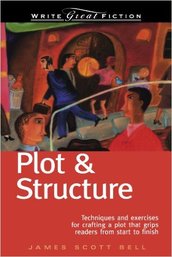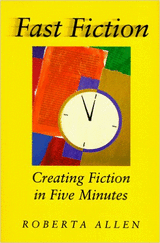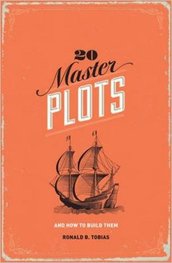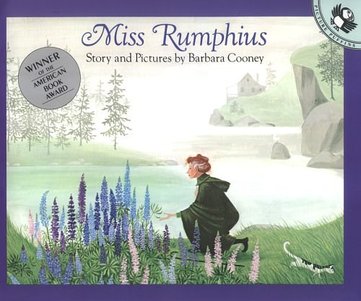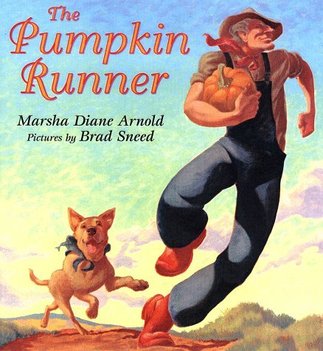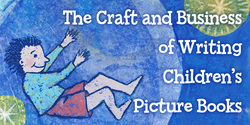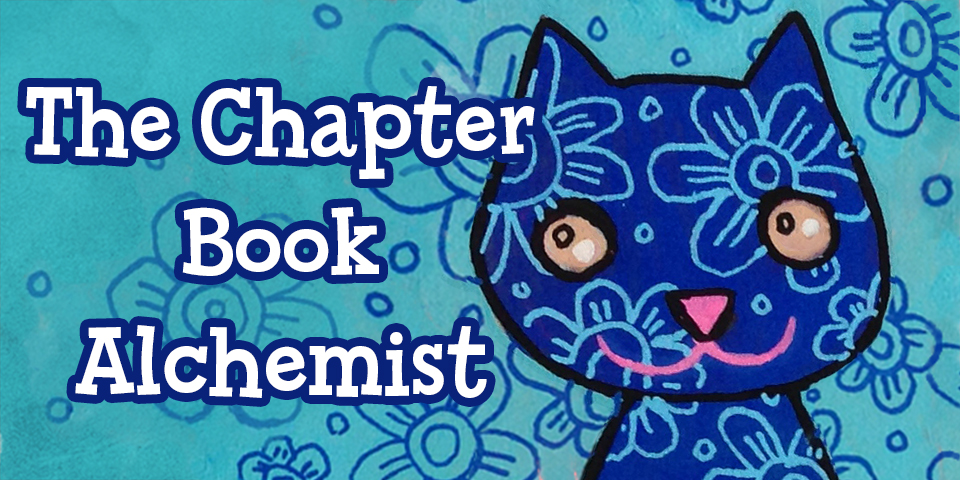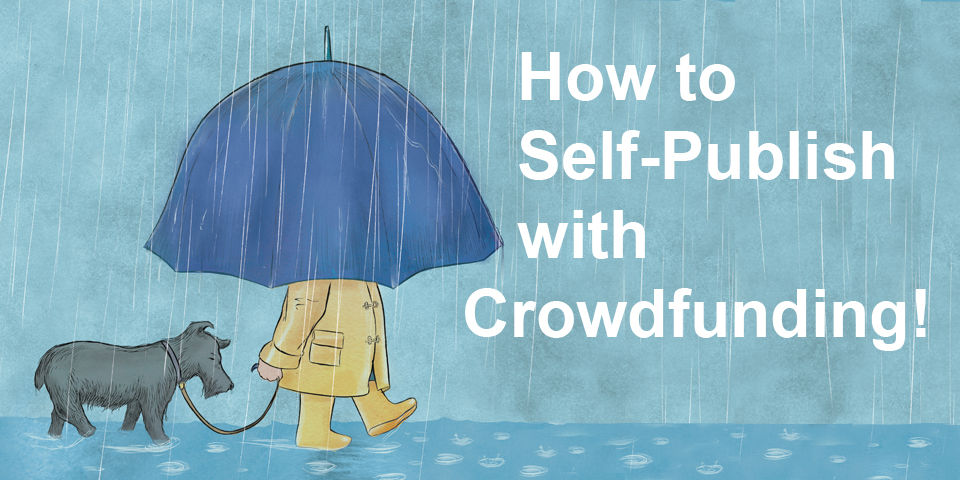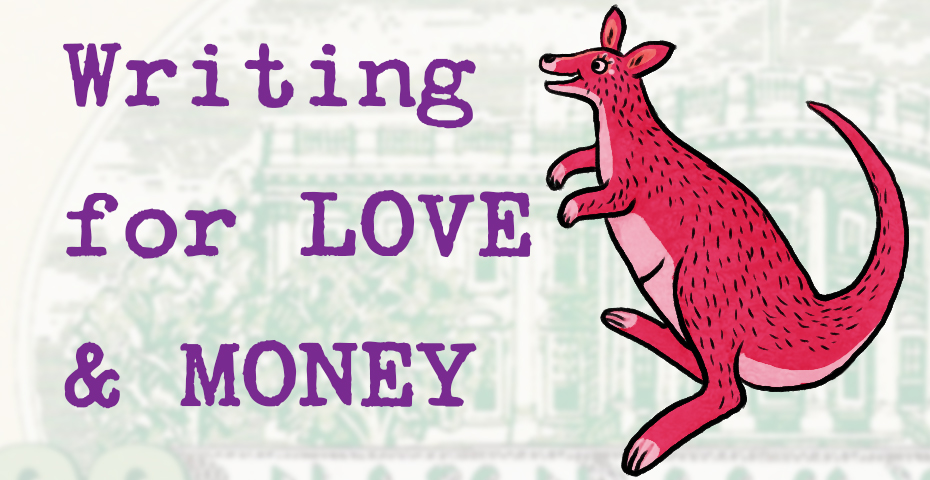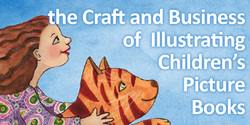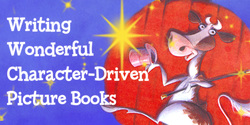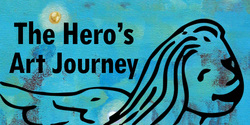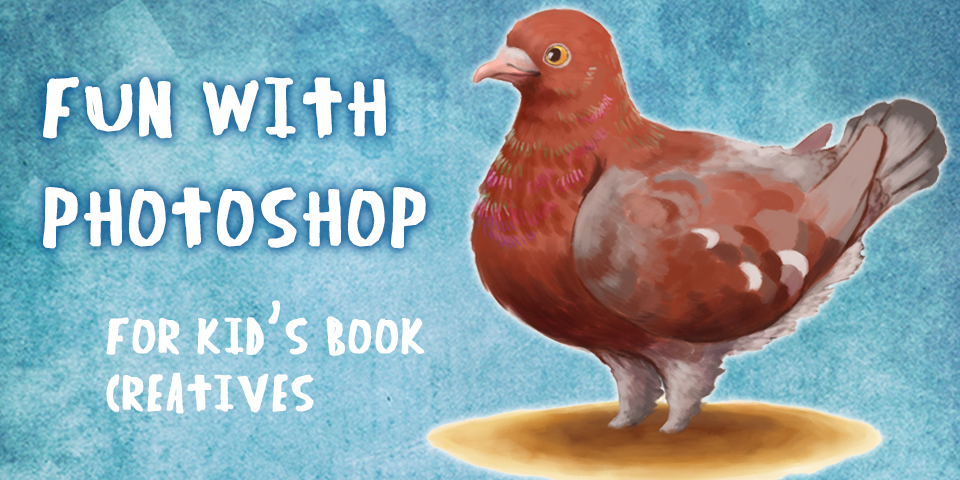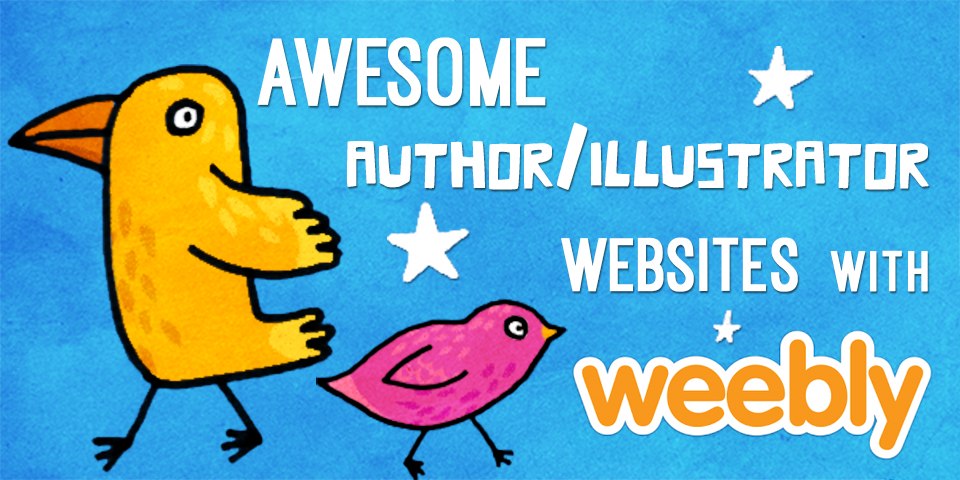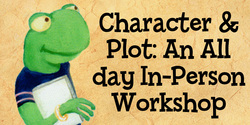|
by Bryan Patrick Avery I just got home from Las Vegas and a trip that gave me the opportunity to witness the incredible magic of David Copperfield up close and personal. In all the excitement, I lost track of the days and realized just this morning that it’s February. That means it’s Black History Month, which gives me the chance to talk about some wonderful alternative ways to bring stories to kids. I think these alternative approaches are important because the subject matter can, at times, be difficult to digest. A great example of this is the graphic novel series March, written by Congressman John Lewis and Andrew Aydin, and illustrated by Nate Powell. The first graphic novel to receive the John F. Kennedy Book Award, March tells the inside story of the Civil Rights Movement as lived by Congressman Lewis. The story is compelling and the artwork is engaging which pulls readers, young and old, into the story of a key movement in our nation’s history. It is written in a style that is accessible to all, and a shining example of sequentiall storytelling, as evidenced by the 2016 Eisner Award it received. If ever there was a way to make such a complex and challenging topic interesting to kids, this is it. Another great way to expose kids (and adults, too) to Black History is through the poetry of African-Americans through the centuries. From Phillis Wheatley, who in 1770 became the first published African-American to Maya Angelou, perhaps the most well-known African-American poet, there are endless resources available to read and hear the voices of the American-American experience. One of the greatest African-American poetic voices is that of Langston Hughes. My favorite poet, Hughes used his poetry to describe the emotions and challenges associated with being Black in America. His poems “I, Too” and “Harlem (What Happens to a Dream Deferred?)" are classics and can be easily understood by, and discussed with, kids. My personal favorite is the Carol of the Brown King. As a child, I would recite it every Christmas Eve for my family after our traditional creole feast. It, and many of Hughes poems, are a reminder of the desire we all share to see ourselves in important stories. I’d recommend checking out Selected Poems of Langston Hughes for sampling of this master poet’s work. You won’t be disappointed. In addition to poetry, there’s a vast array of reference books available that families can use to get a clearer picture of African-American history. The African-American Archive, edited by Kai Wright, has occupied a prominent place on our bookshelf for a long time. It includes transcripts of documents and speeches, poems and novel excerpts starting in the 1600s and leads all way to the current century. It is an eye opening look into the forces and experiences that have shaped African-Americans and the country.
Inside, you’ll find a treatise describing the best place to find slaves (see “Negroes Might Easily Be Had on the Coast of Guinea”), the full text of Dr. Martin Luther King, Jr.’s “I Have a Dream Speech”, and Bill Clinton’s 1997 apology for the so-called Tuskegee Experiments. While not all the subject matter is pleasant, it is an historical record of 400 years of African-American history and can provide children, parents, and writers a window into the African-American experience. There are, of course, many other resources. I’ve always believed that African-American history should be viewed as more than just a set of facts. There is a rich, diverse experience from which everyone can learn. Learning more about the African-American experience may help you write more authentically, and with more compassion and insight. And that’s pretty magical.
7 Comments
by Bryan Patrick Avery Happy New Year! As the new year begins, magicians all over the world are setting goals for 2017. I’m no exception. This year, I plan to (1) compete in my first magic competition, the Joint IBM/SAM Close Up Competition in Sacramento, (2) invent a new trick (I’ve got a good one in the works), and (3) meet at least one of my magic idols (I’m thinking Michael Vincent). I have quite a few writing goals as well. Like many writers, I spend the start of each new year thinking about craft. Inevitably, that leads to me to peruse my bookshelf to review some of my favorite books on writing. The first, which I always return to, is James Scott Bell’s Plot and Structure. Bell has a great way of looking at plot, through a method he calls LOCK. LOCK stands for Lead, Objective, Conflict, and Knockout Ending. Whether you’re writing picture books, middle grade or YA, LOCK is a magical way to boil your plot down its most essential parts. In addition, Bell provides what I consider to be one of the most helpful approaches from transitioning from one act in a story to the next. Using the analogy of a doorway through which the character can pass, but not return, Bell encourages writers to think of their character and plot as something that moves forward, without the ability to retreat. The Doorway from Act I into Act II, then, changes the character’s world in a way that can’t be reversed and propels her towards the conclusion of the story. Another favorite of mine is Fast Fiction, written by Roberta Allen. I’ve had this book since it was first published in 1997 and it’s just as useful now as it was then. Allen has provided a list of writing prompts with the idea that the writer chooses a prompt and write, uninterrupted, for five minutes. Some of the prompts are straightforward. Other include a photo (Photo 7 is titled Woman with hand on mouth). There are questions which accompany the photos which act as prompts. My favorite is “What Lie Has This Woman Told?” Fast Fiction is a great way to get the creative juices flowing on a new story or even provide a needed boost to an existing story. Twenty Master Plots (And How to Build Them) occupies a special spot on my bookshelf. It’s my go to book when I’m fleshing out my plots. Written by Ronald B. Tobias, Master Plots highlight the story structure of 20 primary plots (e.g. Rescue, The Riddle, Transformation, Love, etc.) What’s great about the book as that it not only describes the overall story arc for each plot, but also breaks down each arc into a three-act structure. Tobias provides tips for what should happen in each act and a checklist for each plot structure of all the elements which will help drive the story. I’ve used this for my middle grade novel and, most recently, laying out the plot of one of my picture books.
As the new year begins, all three of these books have made it off the bookshelf as I work towards finishing a couple of in-flight projects. I’m certain that help me (and you) add some magic to world of kid’s literature. One last thing before I go. One of my writing goals is to make it to more writing events and conferences this year. I’ll be headed to SCBWI’s Winter Conference next month and the Summer Conference later this year as well. I’ll also try to find my way to some other events as well. If you see me, come say hi. We can talk books, magic or both. Happy writing! This morning I was walking my six-year-old to school when the droning sound of a lawn mower and the smell of freshly-cut grass saturated my senses. It immediately took me back to my childhood in Michigan, where a two-acre yard filled with pine trees, fruit trees, and an overstuffed garden, was my daily stomping ground. That yard needed a lot of mowing and I spent many summer hours watching our riding mower chomp in lines, zig-zags or circles, depending on who was in the driver’s seat. It was in that hundred year old farmhouse and on that land that I had my first experiences with death. The death of worms we squished, the death of rabbits our cat killed, the death of our dog who was hit by a car, the death of our grandpa, and even, when I was eight, the death of our baby brother who only lived for half an hour. Through it all, my parents were patient and accessible. They were honest and hopeful in our conversations, always allowing questions and giving us time to process. Back to today. I watched my daughter with her Hello Kitty helmet, kicking her pink razor scooter into motion, the wheels spinning and lighting up (Santa was good to her last year). My mind full of thoughts of my own life-changing moments, I began to realize how much lies ahead for her. I hope I will be brave enough to prepare her for her own transformative experiences, but even if I'm not, they will come anyway. One of the things I'm tasked with blogging about are picture books with a spiritual element to them. And today, we’re diving right in to talk about picture books that teach us about death, and how they can be part of our ongoing discussion with children. So far, my daughter’s most traumatic lesson in death was when a butterfly that we hatched from a caterpillar died on the day we released it into the wild (can you tell that we don’t have any real pets? Ah, the joys of apartment living). She cried. I stumbled over my words, trying to explain that butterflies don’t live very long anyway, and that this one hadn’t been very healthy from the start. It wasn’t until later that I read the book Lifetimes (see below) and found the perfect way to explain what I had been trying to say. If you’ve ever written a picture book, you know how carefully each word is chosen. Using picture books as a conversation-starter gives you a simple jumping-off point and allows you to turn that conversation over to a child, prompting them to ask questions and to share what they care about, what they are worried about. Every book teaches something different about death. So choose the ones that you want for your family. Do you want to teach them about Heaven? Or teach that even in death you are giving back to the earth? Or that when one is remembered, they are never truly gone? All of the above? Something different? Whatever your belief system, in the words of my professor and child-development expert, "you need to give them something." There are many books about death, but each is unique. Some leave unanswered questions, some try to answer every question a child may have. Some talk about life and death in nature and use that as a backdrop to talk about when people die, such as this one: 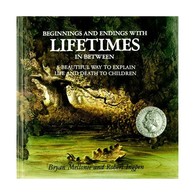 Lifetimes by Bryan Mellonie and Robert Ingpen Snippet: “There is a beginning and an ending for everything that is alive. In between is living.” "Lifetimes...lets us explain life and death in a sensitive, caring, beautiful way. Lifetimes tells us about beginnings. And about endings. And about living in between. With large, wonderful illustrations, it tells about plants. About animals. About people. It tells that dying is as much a part of living as being born. It helps us to remember. It helps us to understand." Some are about losing a pet, like these ones: 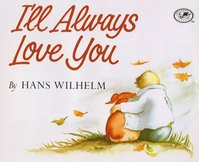 I’ll Always Love You by Hans Wilhelm Snippet: “This is a story about Elfie-- the best dog in the whole world. We grew up together, but Elfie grew much faster than I did.” "A child's sadness at the death of a beloved dog is tempered by the remembrance of saying to it every night, "I'll always love you." Dog Heaven by Cynthia Rylant Snippet - "When dogs go to Heaven, they don't need wings because God knows that dogs love running best." "From expansive fields where dogs can run and run to delicious biscuits no dog can resist, Rylant paints a warm and affectionate picture of the ideal place God would, of course, create for man's best friend. The first picture book illustrated by the author, Dog Heaven is enhanced by Rylant's bright, bold paintings that perfectly capture an afterlife sure to bring solace to anyone who is grieving." Some are about losing a loved one, like this: 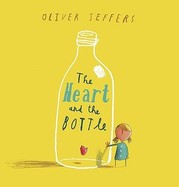 The Heart and the Bottle by Oliver Jeffers Snippet: "Once there was a girl, much like any other, whose head was filled with all the curiosities of the world." "There is a wonder and magic to childhood. We don’t realize it at the time, of course...yet the adults in our lives do. They encourage us to see things in the stars, to find joy in colors and laughter as we play. But what happens when that special someone who encourages such wonder and magic is no longer around? We can hide, we can place our heart in a bottle and grow up . . . or we can find another special someone who understands the magic. And we can encourage them to see things in the stars, find joy among colors and laughter as they play." And some are made broadly applicable by using anthropomorphized animals as main characters, like these: Remembering Crystal by Sebastian Loth Snippet: “She knew that she would always remember Crystal, and that Crystal would always be with her wherever she went, right there in her heart.” "Crystal had lived in the garden for many years. She was growing old. Zelda was just starting out in life. They were best friends. But one day Crystal was not in the garden. She had died. In this gentle story Zelda learns that true friendship is a gift that doesn’t die." 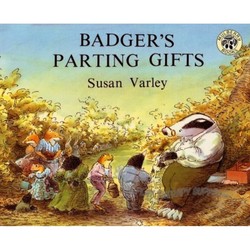 Badger’s Parting Gifts by Susan Varley Snippet: “Badger wasn’t afraid of death. Dying meant only that he would leave his body behind and, as his body didn’t work as well as it had in days gone by, Badger wasn’t too concerned about that. His only worry was how his friends would feel when he was gone…” *Touches on a broadly applicable afterlife. "The tale of a dependable, reliable and helpful badger who realizes that his old age will soon lead to death. His friends learn to come to terms with his death in an enchanting tale." And sometimes you have a brilliant death-themed picture book that breaks the mold completely, like this one: 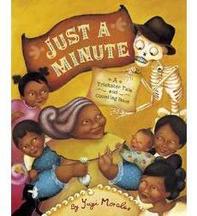 Just a Minute by Yuyi Morales Snippet: “When Grandma Beetle woke at dawn, she heard a knock at the door. And, oh my, waiting outside she found Senor Calavera. Senor Calavera tipped his hat. What a skinny gentleman! With a pass of his hand he signaled to Grandma Beetle. It was time for her to come along with him.” "In this original trickster tale, Senor Calavera arrives unexpectedly at Grandma Beetle's door. "Just a minute," Grandma Beetle tells him. She still has one house to sweep, two pots of tea to boil, three pounds of corn to make into tortillas...Grandma Beetle cleverly delays her trip and spends her birthday with a table full of grandchildren and her surprise guest." There are so many wonderful ones, but I hope this helps you get started on your own list. And if you are trying to write a picture book about death? As always, study from the masters. As I think about my growing-up-way-too-fast, scooter-kickin’ six-year-old (and her two younger sisters), I am both nervous and excited for the future. I’ve learned that I can’t protect them from all of the hurt in the world, but I can do my best to prepare them to come through those hurts both stronger and more empathetic. Picture books are an empowering tool to help us get there.  This post was written by Maria Oka, a mother of three very busy girls whose reading and writing spans from books for the very young to older picture books. Besides being interested in rollicking laugh-aloud books with her girls, Maria is also interested in children's books with a spiritual element. She reads, writes, and tries to juggle dinnertime, school schedules, and a very attached-at-the-hip baby in Southern California, where she lives with her husband and three munchkins. I am fragmented this month, even more than usual: - I sold my home of 35 years in California. - Most of my belongings will be in storage for months. - A few precious belongings are with my husband in the wilds of Texas. - My son’s wedding is in three weeks and I still don’t have “the right” shoes. - And I haven’t figured out the babysitting schedule for my granddaughter yet. That’s only the beginning of my fragments. So, for this month’s blog, I’m going with the flow. Fragmentation rules. Fragment #1 – Coming Home You may have noticed the tag going around Facebook: “What 10 books have influenced or stayed with you?” It reminds me of my last two blogs for Children’s Book Academy, “The Books We Can’t Let Go.” The subject is perennial. Those special books that stay with us are like coming home, holders of our memories, lessons, challenges, and friends. Just as the fragrance of lilacs takes me to my grandmother’s Kansas farm and the smell of cinnamon reminds me of my aunt’s kitchen, so a book can stay with us for decades. When we need comforting, when we want to smile or to ponder, we often return to a moment in time or a book on the shelf. Phrases and characters from picture books can even become part of a family’s language. I can say to my now adult child, “I do not know yet what that might be,” and we’re both taken home to the days when Miss Rumphius was a nightly tradition. I’d love to know the phrases or characters from books that have stayed with you, that take you home to a comfortable, warm place. Fragment #2 – Letting Go Over the years, I’ve encountered many talented writers who are terrified of letting go. These writers aren’t illustrators, but they think they can instruct in how to illustrate. In the traditional picture book world, it just doesn’t work that way. I’ve always been an advocate of “letting go.” It can lead to wonderful surprises. When I wrote Lost. Found., my 22-word manuscript consisting of two repeating words, I knew I was instructing the illustrator what to draw, but not how to draw. I also knew I wouldn’t be choosing my illustrator. That is the editor’s well-deserved right. Still, when Neal Porter told me at a NYC lunch (Yes, dear writers, dreams do come true.) that he’d chosen Matthew Cordell, I was surprised. I’d just dared to suggest Erin or Philip Stead when Neal asked my thoughts. I felt their sensibilities were in keeping with my story. I thought Matthew’s style a bit cartoonish, loose, and wacky. Never mind that he’s also prolific, funny, and brilliant. As I’ve always done, I did not debate, cry, or plead. I “let go.” I trusted. I admit that was relatively easy sitting across the table from the rock star of picture book editors. My story could not be in better hands. But I’ve “let go” many times before. I trust my editors to choose the illustrator, who I trust in turn. Sometimes the letting go brings delightful surprises (Brad Sneed’s illustrations were entirely different from what I’d imagined, yet The Pumpkin Runner is a Smithsonian Notable and still in print after 16 years.) and sometimes not-quite-so delightful surprises (I’m not telling!). But it’s all okay. Truly. Because unless you let go of your daddy’s hand when you want to walk, of the side of the boat when you want to scuba dive, of your rigid ideas about your story when you want to join a picture book team, you won’t get far and you won’t get to be as joyously surprised as I was this week when I saw Matthew Cordell’s early sketches for Lost. Found. Oh, what wondrous things arrive from letting go. I can’t wait until you all see the delightful surprise too, in January 2016. Fragment #3 – Bittersweet artist’s life Two days ago I posted a simple thought on Facebook: “A rejection and a contract in the same day. Life is bittersweet.” I didn’t expect a landslide response, but that’s what I got. Several aspiring writers thanked me for sharing how the publishing business goes, so I want to share again here. Remember that some of our best writers are rejected regularly. As with life, it’s best to keep a steady keel and vision and endeavor to take all things, rejection and celebration, with calm. Fragment #4 – Courses and books 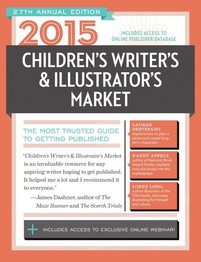 At Children’s Book Academy, there’s a potpourri of interactive ways to learn how to write for children. These include videos and online chats, which are such fun methods to gather information and inspiration. But sometimes a book still proves handy, especially if it’s a book like 2015 Children’s Writer’s & Illustrator’s Market. Fellow Children’s Book Academy blogger, Miranda Paul, and I were honored to be interviewed for it and we proudly mentioned our courses and blogs at www.childrensbookacademy.com. Multiple tools are wise when you have an important job like writing for children and with editors like Chuck Sambuchino and Harold Underdown, you know this book is a great roadmap to publishing. Consider a copy. Even without the life changes causing my current fragmentation, I often feel fragmented, as do many writers and illustrators I know. But fragmentation isn’t necessarily a bad thing. Fragments of thought, of life, are often what our best stories are made of. Consider the kaleidoscope as your example. Fragments, when we gather them, can turn into a beautiful whole, a complete creation to share with others.  Marsha Diane Arnold is an award-winning picture book author with eleven traditional books, two digital apps, and an e-book to her credit. Represented by Red Fox Literary, in 2013 she sold four picture book manuscripts to Neal Porter Books, Kate O'Sullivan of Houghton Mifflin, and Tamarind, Random House UK. Her agent is currently in negotiations for two more books. Marsha grew up on a Kansas farm and for decades created imaginative worlds and wacky characters in northern California. She’s now creating those worlds in southwest Florida. Her Writing Wonderful Character-Driven Picture Books course has helped many published and aspiring writers to write stronger characters. You may read about her books, school visits, and life at www.marshadianearnold.com 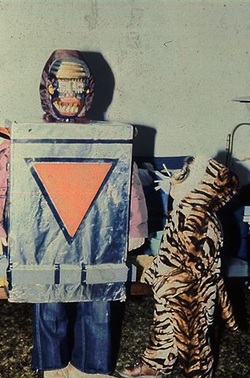 There is something about Halloween that evokes a lot of childhood memories for me. I get a teary-eyed smile when I see the little trick-or-treaters out gathering their candy. I remember eating donuts and drinking cider while carving pumpkins and toasting their seeds. Getting all upset when my mom tells me I have to wear a coat over my costume. Eagerly waiting for “It’s the Great Pumpkin, Charlie Brown” to be aired (of course this was before DVDs and On-Demand viewing). One particular memory that has me laughing every time has to do with a robot costume made out of a large cardboard box covered in aluminum foil, a dark driveway, a vicious poodle and shaky footing. Yeah. Such great memories. Of course, any bookstore is just brimming with Halloween themed picture books right now. Jerry Seinfeld did a great job of capturing the Halloween experience for those who grew up in the 70s and 80s in his picture book, Halloween. I question whether it would be enjoyed more by adults than children, but it is really quite funny and obviously autobiographical. But we aren’t all stand-up comics. So how do we capture the “funny” from our childhood and turn it into a picture book? Marcie’s 5 Steps for Mining Memories to Create Funny Picture Books 1) List 5 memories from your childhood that make you laugh. You know, those stories that get shared at family get-togethers? Now these should be vignettes. Moments. We aren’t going for an epic novel here, only a short picture book. 2) Pick one of those 5 memories and create a stream-of-consciousness list. Remember your 5 senses. Flesh out the memory, listing all you can remember about the sights, sounds, smells, tastes and feelings of that moment. 3) Regress, yet stay present. Go back in time. Reconnect with the younger you. But remember, this is a story for today’s kids, not adults, so you want to be sure to have a kid-perspective that today’s kids can relate to. Might require some jiggling. Not sure kids can relate to the costumes in the “cardboard box with the cellophane top” that Seinfeld talks about in Halloween. 4) Fill in the holes. These are stories. They are based on truth, yet as a writer you are able to take artistic license. Is your memory foggy is parts? Who cares! You are a writer. Give yourself permission to write and create. Embellish and exaggerate. Remember, kids books are about the main character’s BEST or WORST day. So pump it up and think big! 5) Mash and Twist. Is your memory about your pet dog? What if you change it to a dinosaur in your re-telling? How does that change things? How does that add humor? Have fun with it. Think of Peter Brown’s Children Make Terrible Pets. It was inspired by a childhood memory, however I don’t think Peter was ever a female bear or that he was captured in the woods by one. Yet, he twisted the memory and what we have is a brilliantly funny book. Remember, you are telling a story here. Up the ante to up the fun! So what are you waiting for? Mine those memories and have some fun! PS. A very special thank you to Brianne and Marissa for the use of your childhood photos!  In previous chapters Marcie Colleen has been a teacher and theatre educator, but now she splits her days between chasing the Picture Book Writer dream and chasing toddlers on the playground as a nanny. Both are equally glamorous! Her blog, The Write Routine and her Teacher’s Guides, can be found at www.thisismarciecolleen.com. You can also follow her on Twitter. Additionally, Marcie is the Education Consultant for Picture Book Month. She contributes the 4th Friday of the month, as a Blogette, right here, posting on humor in picture books. She lives with her fiancé and their mischievous sock monkey in Brooklyn, NYC. |
Meet the Friday Blogonauts
First Fridays will feature Bryan Patrick Avery, published writer , man of mystery, and professional magician among other things.
Second Fridays will feature awesome multi-award winning author Marsha Diane Arnold who will be writing about character-driven and/or nature-based books and/or anything she likes :) Third Fridays will feature independent Aladdin/Simon & Shuster editor Emma Sector who has helped bring many books into the world. Fourth Fridays will feature the great Christine Taylor-Butler who has published over 70 award-winning fiction and non-fiction and nonfiction books including the acclaimed new middle grade series - The Lost Tribes. Fifth Fridays will feature the fabulous Carl Angel award-winning multi-published Illustrator and graphic designer. Join our Tribe
and receive 7 Steps to Creative Happiness, access to free webinars, and lots more!
Your email addresses are always safe and respected with us. Follow our Blog!
Archives
January 2019
Categories
All
|
|
Discover
|
About Us
|
Join Us
Join our Community and receive a fabulous free gift, KidLit tips, newsletters, scholarship info, contests, and more!
Join our KidLit Mentorship |
Social Media
Interact with our FaceBook Group or follow us on:
|
© 2010-2024 All content on this website is copyrighted. Sorry, all courses are non-refundable.
